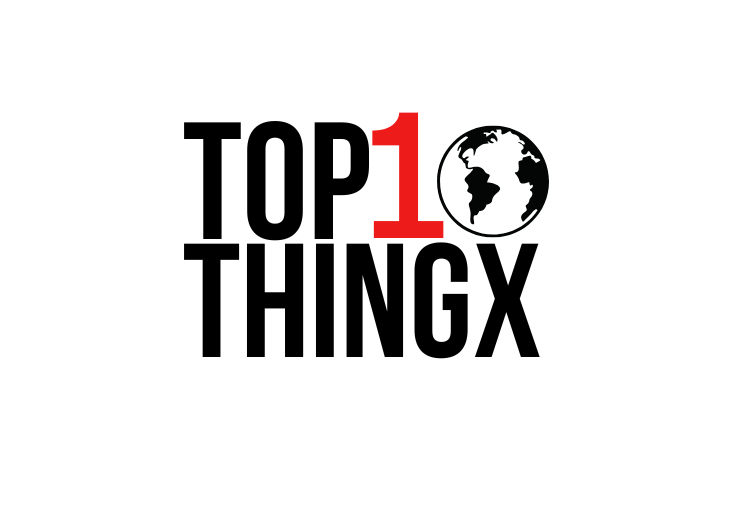Top 10 Everyday Items You Didn’t Know Were Banned in Other Countries
When you think of illegal items, you probably picture drugs, weapons, or counterfeit money. But did you know that some everyday products you use freely at home are actually banned in other countries? From chewing gum to baby walkers, several nations enforce strange laws that may leave you scratching your head. Let’s explore the top 10 banned items that prove the world is full of weird laws around the world. 1. Chewing Gum – Singapore Singapore is famous for its cleanliness — and strict rules. In 1992, the country banned chewing gum to prevent sticky messes on public property. The government considered gum a menace that damaged pavements, buildings, and public transport. While medicinal and dental gums are allowed with a prescription, bringing in regular gum can result in hefty fines. So, if you’re visiting Singapore, keep your gum at home — it’s officially an illegal item there. 2. Kinder Surprise Eggs – United States The classic Kinder Surprise — a chocolate egg with a toy inside — is a childhood favorite in many countries. But in the United States, it’s banned. Why? Because U.S. law prohibits embedding “non-nutritive objects” inside food. The strange law stems from child-safety concerns. Although Ferrero introduced a modified version called Kinder Joy, the original egg remains an illegal item under FDA regulations. 3. Baby Walkers – Canada Believe it or not, baby walkers are banned items in Canada. The government prohibited their sale and import in 2004 after research showed that walkers delayed motor-skill development and caused injuries. Owning or selling one can lead to fines up to $100,000. This is one of those weird laws around the world that actually makes sense — protecting babies from harm, even if it seems overcautious. 4. High Heels – Greece’s Ancient Sites If you plan to visit Greece’s beautiful ancient ruins, leave your high heels at home. The country banned them at archaeological sites in 2009 to protect delicate marble floors from damage. It might sound like a strange law, but it helps preserve historic monuments like the Parthenon. So, if fashion meets archaeology — flats win every time. 5. Vicks Inhalers – Japan Many travelers are surprised to learn that Japan bans certain over-the-counter medicines — including Vicks Inhalers. The reason? They contain pseudoephedrine, a substance restricted under Japan’s strict drug control laws. Even common cold medicines like Sudafed are considered illegal items. Visitors caught carrying them could face fines or even detention. This is one of those weird laws around the world that can turn a simple trip into a legal headache. 6. Plastic Bags – Kenya In 2017, Kenya introduced one of the toughest bans on plastic bags in the world. Anyone manufacturing, selling, or even carrying plastic bags can face massive fines or jail time. The government passed the law to reduce pollution and protect wildlife. While the strange law might sound harsh, it’s a powerful step toward a cleaner, greener future. 7. Yellow Clothing – Malaysia (Certain Events) In Malaysia, wearing yellow might get you in trouble — at least during times of political protest. The government once labeled yellow clothing and accessories as illegal items because protestors used them to symbolize opposition movements. This temporary restriction is among the most politically charged banned items, proving how color can carry more meaning than you’d expect. 8. Reincarnation Without Permission – China This one tops the list of weird laws around the world. In 2007, China passed a law requiring Buddhist monks to seek government approval before reincarnating. Yes, you read that right. The regulation, aimed at controlling religious leadership succession, makes unauthorized reincarnation technically an illegal act. It’s a surreal example of how strange laws can cross even spiritual boundaries. 9. Honey – Maldives While the Maldives may be a tropical paradise, it’s not so sweet for honey lovers. The import of certain honeys and bee products is restricted due to fears of contamination and pests. Although local honey is allowed, bringing foreign brands could lead to confiscation at customs. Who knew your breakfast essential could be considered an illegal item? 10. Blue Jeans – North Korea Fashion is political in North Korea, and blue jeans are a symbol of Western culture — particularly American influence. That’s why denim jeans, especially in blue, are banned. Locals may wear black jeans instead, as they appear more “socially acceptable.” This fashion-based restriction takes banned items to a whole new level, illustrating how clothing can carry cultural and ideological meaning. Why Do Countries Enforce Such Strange Laws? Every nation has its reasons — cultural values, safety regulations, religion, or environmental protection. While many banned items may seem odd to outsiders, they often reflect deeper concerns. For example: Singapore’s gum ban keeps public spaces pristine. Kenya’s plastic ban helps combat pollution. Canada’s baby walker law protects infants. In essence, these strange laws represent different societies’ priorities — whether health, environment, or heritage. Travel Tip: Always Check Before You Pack If you’re planning an international trip, remember that what’s legal in your country might be an illegal item elsewhere. Always check the customs website or embassy guidelines before carrying everyday products like: Over-the-counter medicines Food items or supplements Electronics and drones Cosmetics or skincare products A quick search can save you from fines, embarrassment, or worse — being detained at the airport for breaking weird laws around the world. Final Thoughts The world is full of surprises — and sometimes, those surprises come in the form of illegal items you never suspected. From chewing gum in Singapore to blue jeans in North Korea, these banned items remind us how diverse global cultures and regulations truly are. While some of these strange laws may make you laugh, they also highlight how countries balance tradition, safety, and modern life in their own unique ways. So next time you travel abroad, double-check your suitcase — because what’s ordinary for you might just be against the law somewhere else. 1. Why are some everyday items banned in other










